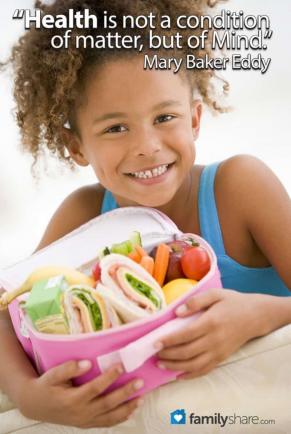
Over a year ago, I stopped making school lunches. Wow, it was liberating! I had packed my kids' lunches for several years, mostly because I wanted to make sure they were packing more than a cheese stick and cookies. I had come to dread the task and the late-night packing sessions. Passing off the task to my then 2nd and 5th graders was one of my best parenting decisions. After all, they'll be eating lunch the rest of their lives; they need to know how to pack one.
Start with a discussion about healthy eating. After a balanced breakfast, the food children consume for snack and lunch at school is the fuel to keep their brains and bodies moving. Older children, who may have extra activities before or after school, need to eat throughout the day.
There are four elements in a basic lunch. Adapt as necessary to fit your family's needs.
Main Dish
Should include a protein source. Basic meat and cheese sandwich works, as does peanut butter and jam. Other options are pita and hummus, yogurt and bagel and cheese and crackers.
Fruit/Vegetable
Any raw fruit or vegetable is best. Other options include no sugar added applesauce, dried fruit or a small salad. Two or more servings are ideal.
Snack Food
This category includes crackers, chips (in moderation), granola bars, cheese sticks, popcorn, pretzels.
Beverage
Water is the best choice. Other options are milk, fruit juice and low-calorie sports drinks.
Optional Treat
An occasional homemade cookie makes a home-packed lunch special. My daughter often asks to pack extra for her friends. You can also include a small piece of candy, or a special fruit like watermelon or berries.
Once your children understand how to make a lunch, do it with them a few times. Younger children will need supervision. I check in with my kids often and ask "What main dish did you pack?" or "Why do you have chips andcrackers?" They are able to identify all the elements they should have, and they know when they haven't made the best choices. I also ask if they need help cutting fruits and vegetables or opening stubborn packaging.
Make packing supplies accessible. Kids should know where to find beverages, snacks, and produce. Keep water bottles filled in a fridge and snacks on a shelf they can reach. Have younger children choose their own lunchboxes and provide an insulated bag for older children. Provide plastic spoons and forks, or have older silverware on hand for kids to use. Making a lunch should take about five minutes.
Be flexible about their choices. Variety makes things interesting. If your child loves edamame or seaweed snacks, make them available as your budget allows. I like to make homemade granola bars and muffins. Sometimes my kids take leftover foods like pancakes and homemade pizza, which they eat cold. Take children grocery shopping with you and let them choose some of the foods they would like to pack for lunch.
Remember food safety. The USDA gives several helpful tips for packed-lunch safety. They recommend packing lunches on a clean surface, avoiding cross-contamination, keeping cold foods cold, and packing only as much food as your children will eat in one meal. Also consider the requirements of your school. Some schools have strict rules about peanut butter and products containing tree nuts, due to food allergies.
With a little preparation and education, you can turn your children into expert lunch packers. After complimenting them on their new skill, you can spend your extra time writing notes to slip into those perfectly-packed lunches.

